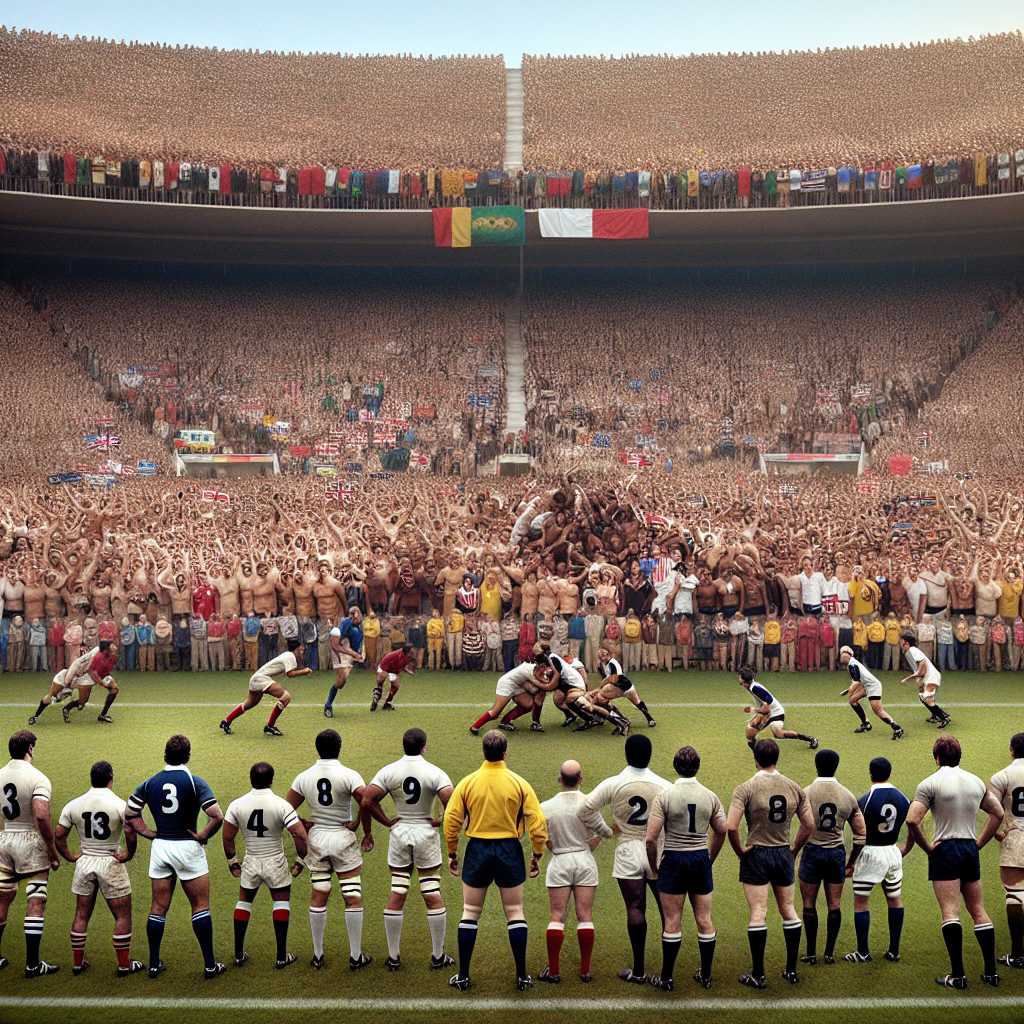Understanding the Rugby World Cup: A Comprehensive Guide to Rugby’s Premier International Competition
Introduction to the Rugby World Cup
The Rugby World Cup stands as the apex of international rugby union tournaments. Held every four years, it showcases the strength, strategy, and perseverance of international teams as they vie for the illustrious Webb Ellis Cup. Named after William Webb Ellis—who is often credited, albeit with some controversy, with inventing the game of rugby by picking up the ball during a football match—the tournament represents the pinnacle of achievement in the sport.
History and Development of the Tournament
The inaugural Rugby World Cup took place in 1987, co-hosted by New Zealand and Australia. Sixteen teams competed in what was envisioned as a tournament that would unite various participating nations in their passion and commitment to the sport of rugby. Since its inception, the Rugby World Cup has expanded in scope and popularity, paralleling rugby’s growth as a global sport. As of 2023, it had occurred every four years, featuring a total of nine tournaments convened across different host nations.
Qualification Process and Tournament Structure
Countries must go through a rigorous qualification process to participate in the Rugby World Cup. The format typically includes direct qualification for the best-performing teams in the previous tournament and regional qualification tournaments for other aspirants. Over time, the number of competing teams has increased from 16 at inception to 20, looking to accommodate more nations and enhance competitive balance.
Once the final lineup is confirmed, the competing teams are divided into pools. Initial matches happen within these pools, where each team plays every other team in their group at least once. After these round-robin matches, the top teams from each pool advance to a knockout stage, which consists of quarter-finals, semi-finals, and ultimately culminates in the final match where the champion is crowned.
Memorable Moments and Remarkable Achievements
The Rugby World Cup has been a stage for some of rugby’s most unforgettable moments and breathtaking displays of skill. For instance, the All Blacks’ haka performances are not just inspirational Maori rituals but also worldwide spectacles anticipated eagerly by fans all around the globe. Furthermore, moments like South Africa’s win in 1995 represented far more than just sporting excellence; it symbolized a newfound unity post-apartheid with President Nelson Mandela presenting the trophy wearing a Springbok jersey.
Similarly, shocks and upsets are not uncommon—the 2019 tournament saw host Japan defeating Ireland and Scotland to reach the knockout stages, a true testament to rugby’s unpredictable nature and relative parity.
Economic Impact and Cultural Significance
Every iteration of the Rugby World Cup brings significant socio-economic benefits to the host country. Scores of international visitors travel to cheer on their teams, contributing to local economies through tourism spending on accommodation, food, travel, and entertainment. Furthermore, preparation for these events often spurs infrastructural upgrades and increased global visibility.
The cultural significance cannot be understated either. Rugby World Cup encourages unity as countries rally behind their teams, amplifying national pride. Furthermore, initiatives attached to the tournament work on extending the game by invigorating grassroots rugby across various demographics globally.
Future Directions of the Rugby World Cup
Moving forward, there are discussions around expanding to include more teams as rugby continues to grow internationally. Also gaining momentum is equal prominence for women in rugby; parallel women’s rugby events have been gaining traction with hopes of further enhancing gender equality in sports.
Innovations in technology and fan experience are predicted parts of future tournaments too. From increased use of video replay technologies for officiating to augmented reality experiences for spectators—both at home and on-site—the future promises a more interactive and tech-driven participation.
Notes
Image Description: A glossy photo capturing an iconic scene from past Rugby World Cups might illustrate players from two different teams engaging intensely on field with fans festooned in their country’s colors cheering from packed stadium stands – embodying both communal essence and fervent spirit particular to these lifetime sporting moments.

